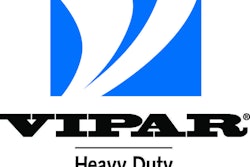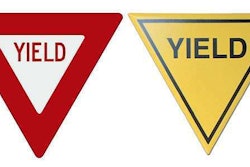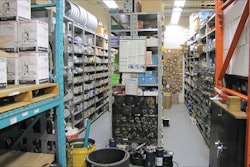Think about the salespeople in your business today. How many of them are over 50? How about 60? How many of them will be retiring from your business in the next five to seven years?
If the answer is a significant number, it may be time for your business to start preparing for its next generation of salespeo- ple, says Jim Pancero, professional sales advisor and consultant.
“This younger generation does so many things differently than my generation — the generation that’s dominated [sales] for decades,” he says. “A business that plans to hire this generation has to be ready for those differences.”
For the better part of 40 years the heavy-duty aftermarket has been just one of many industries that has relied on the sales strategies and tools created by Baby Boomers.
But that won’t be the case for much longer. With more and more of these sales veterans reaching the twilight of their career, the aftermarket is about to experience another generational change.
There’s a new group of salespeople on the way, Pancero says, and like the Boomers decades before, they are going to revolutionize the industry.
Businesses willing to take time now to look at the future makeup of their sales staff can ensure they are well positioned to hire this generation, and bring them into an environment where they can succeed, Pancero says.
“We are at a changing of the guard,” he says. “This younger generation is moving into business — and moving into power in business.”
He adds, “If you’re a business owner with older [sales-people], and you know you’re going to start losing people in the coming years, you have to start preparing for a change.” The fundamental differences between the aftermarket’s next generation and its current crop of veterans are significant. From daily interaction to long-term sales plans, this generation has new preferences for nearly every aspect of business.
The most easily identifiable difference is communication.
Today’s newest business professionals have grown up in a digital age, with computers, the Internet and technology a part of their daily lives. They’ve adapted to the technology as they’ve grown, and are now incredibly comfortable relying on it for their communication.
Pancero offers the cell phone as a prime example.
Most outside salespeople in the aftermarket today are equipped with smartphones. But while veteran salespeople are still using the tool primarily for calls and emails, Pancero says today’s younger generation uses the phone as a do-it-all communication tool.
This new generation doesn’t make a lot of phone calls, but that doesn’t mean they are poor communicators, he says.
“This generation spends more time communicating than any other previous generation,” he says. “They have grown up in a world that’s interconnected. They are constantly texting, tagging, sharing.”
He adds, “It’s completely different from the Baby Boomer generation. When I give a presentation to a group that age, I always ask ‘How many of you have a best friend you haven’t talked to in two years?’
“People raise their hands. This [next] generation isn’t like that.”
If anything, the next generation’s preferences are rubbing off on others.
“I think the younger generation has started to shape the way we think,” says Steve Hansen, national accounts manager at Minimizer. At 35, Hansen says he remembers the days before the Internet but was able to grasp the technology when it debuted.
Though he “still knows the importance of a phone call,” Hansen says his preferred method of communication now is email, and references the ability to communicate on a broad scale and record all interactions as just a few of the tool’s best features.
More than anything else, Pancero says it is the immediacy and efficiency the online world provides that has pushed the younger generation away from the phone call.
“[The next generation] has grown up with the assumption that the more we increase technology the more we can take advantage of it,” he says. Email lessened the reliance on phone calls; text messages lessened the reliance on emails and so on.
Each new technology also has increased the next generation’s standard for customer service.
“Everybody expects same-day customer service now,” says Edward Kuo, director of sales, motor vehicles at Datalliance. “Older generations are probably a little more accept- ing of time delays because they are more used to that and used to dealing with that. They don’t immediately ac- cept that as a lack of customer service.
“A two-day wait for a response [to a customer service question] would be totally unacceptable to this younger generation.”
The same standards can be seen in sales interaction.
“Our younger customers are much more used to having access to information and tools that didn’t even exist more than 15 years ago, but all of our customers are starting to become online savvy,” says Paul Tuomi, director of parts sales at Daimler Trucks North America (DTNA).
“I think we all kind of think Google knows everything now,” adds Hansen. “Why listen to a sales guy give his pitch when you can go to Google and find everything he was going to say in five minutes?”
Pancero says that hypo- thetical scenario is ultimately the biggest difference between Baby Boomers and this new generation.
Young professionals entering business today don’t view a sales call as an opportunity to showcase uniqueness of their product and their individualized customer service skills. Pancero says, to them, those are benefits any quality supplier and salesperson should provide.
Instead, he says today’s young salespeople want to promote their company’s comprehensive and consistent service approach. It doesn’t matter where, when, why or how you reach out and to whom, young salespeople want customers to know if you contact their business for support, you will get it immediately. And their message and the quality of their response will never change.
After decades of self-reliant Baby Boomers adhering to the value of the individual, today’s next generation wants to do everything as a team.
That includes sales in your business, says Pancero, and it doesn’t matter how successful you’ve been using the Baby Boomer model.
When you start employing this new generation, they are going to expect you to use their team approach, he says.
“The younger [generation] expects to be coached. They have lived their entire life participating as part of a team,” he says.
This concept may fly in the face of your current sales plan, but Pancero says dif- ferent doesn’t automatically mean crazy.
“A lot of sales structures today are reactive,” he says. Salespeople are given full authority to run their territory as they see fit, and sales managers are brought in only to help close deals, authorize pricing discounts or put out customer service fires.
“The sales manager is an ambulance; he’s not a healthcare facility,” Pancero says.
The team approach turns that concept on its head.
All employees (inside sales people, outside sales people, drivers, technicians, etc.) follow a best practice for selling and customer service.
Sales managers are active coaches and offer guidance to help employees though all aspects of sales, and customers reap the benefits by experiencing consistent service across all platforms.
“I think ‘we’ is a much more powerful statement than ‘me,’ or ‘I,’” says Dave Willis, president at CRW Parts. “When you have a team working in the right direction you can create an environment where everyone knows every customer’s value.”
He adds, “A quarterback doesn’t snap the ball to himself then block for himself and run out for his own pass … it takes everyone on a team to be successful.”
But before you book the local Holiday Inn Conference Center for a week-long sales retreat, it’s a good idea to evaluate your sales team and create a reasonable timeline for changes.
Not every sales team immediately needs to be revamped.
“If one 60 year old is selling to another 60 year old you’re golden,” Pancero says. “But when a 30 year old steps in to one of those positions things are going to change.”
That’s why Pancero advises businesses to project staff changes five to seven years out. If significant turnover — either in number of employees or territory covered — is expected, it is a good idea to start researching next generation sales strategies now.
It’s not fair to assume a young salesperson can step into a role vacated by a retiring veteran and not miss a beat, Pancero says, especially when that salesperson is being asked to sell using a strategy they’re not comfortable using.
By taking time to see how both generations conduct their business, leadership can identify stress points and areas where a sales structure can be altered.
It’s also important to identify how your customers will respond to sales changes, adds Geoff Garafola, product and technical information manager at Inland Truck Parts.
Garafola says Inland’s sales team works with an incredibly diverse cross-section of customers. Each of its nearly 30 market areas has different tendencies. Garafola says the company tries to identify which areas are more or less responsive to specific sales methods, and uses that information when building sales plans and positioning salespeople.
Once you’ve identified when the next generation will enter your business you have to determine what you want them to sell.
Superior products are great, but as mentioned earlier, Pancero says the next generation sees that as a given.
“Look at your environment compared to competitors. Ask yourself, ‘What’s going to give me an edge?’” he says. “The only reason you should make any change is
to increase your competitive edge and profitability. You have to decide how you want to do that.”
Pancero says once that selling point is established a team-based selling strategy should be built around it. Pancero promotes this concept in his presentations as SWAT team selling.
The polar opposite of the Baby Boomer’s “lone gun- fighter” approach, Pancero says SWAT team selling is the concept of building responsibilities and best practices for each employee and then working as a unit to grow sales. It is designed to maximize the skills and tools of the next generation. The first step to implementing SWAT team selling in your business is awareness. Your sales management team must understand the benefits of changing and buy in to the change. Pancero says this can be tough to do with veteran salespeople.
“The biggest resistance I get from clients is [the lone gunfighter] approach has worked so far, ‘Why do I have to change?’” he says. “It’s hard to see another way might be a better way moving forward when the current way has worked for so long.”
“I think the mindset is there [for change],” says Angelo Volpe, executive director at the Commercial Vehicle Solutions Network (CVSN), “but sometimes people get so entrenched in what they’re doing they sort of lose sight of it.”
Pancero advises business owners to present the SWAT team idea first to manage- ment, and says only when that group accepts it can the next step be approached.
He refers to that step as the team development — taking the time to build the tools the team will need moving forward.
Your competitive advan- tage should be clearly visible throughout this process, Pancero says.
“Ask your customer, ‘How do you define great support?’ and build from there,” he says.
This includes best practices for sales calls, methods for communicating customer interaction, consistent and unique language for all customer service situations and coaching tips for management.
Pancero says the last one is incredibly important with the next generation. They appreciate guidance in all areas, and will thrive if given the opportunity to regularly meet with a coach or mentor who can help them improve their performance.
But before showcasing your new strategy to your entire team, make sure your sales managers can teach it, Pancero says. Leading a SWAT team requires a specific approach.
“You have to teach them how to coach,” he says. “If they’ve never done account planning, they probably won’t be good at it.” Work to provide them with the tools they need so when they are tasked to do the same with your salespeople they can succeed.
At Midwest Wheel, Executive Vice President John Minor says his sales people work together to help mentor each other. Veteran salespeople educate new employees on products and customers while the young employees return the favor with information about technology.
This falls into the final step of the SWAT team selling — teach your entire team how to use the tools and the coaching you’ve created.
Pancero says once management has mastered your strategy you can debut it company wide.
This is the practice at Inland, where Garafola says “We give all of our team the same tools and then give them the best ways to use them.”
“A sales team is more than just the one person who calls on a customer,” adds Willis. “He might be the salesperson, but he’s not the only person in your business who interacts with that customer.
“Your driver probably sees [your customer] more than anyone else and your counter guy probably talks to him more than anyone else … each one should be offering your customer the same message.”
Building a team-based selling structure also indirectly provides your business an excellent recruiting tool for that next generation sales professional.
“It definitely gives you an advantage against your com- petition,” says Volpe.
As one of the aftermarket’s most active training organizations, CVSN has honed in on the aftermarket’s next generation. It believes Pancero’s SWAT team strategy offers a great selling point with prospective employees.
“This is such a big part of everyone’s business,” says Volpe. “If you want to deal with this next generation of customers you’re going to need salespeople who know how to reach them.”
“The more you can build your systems to attract young talent the better off you will be,” adds Garafola. “And that’s not just for salespeople. We’re always looking to recruit that next level of management.”











